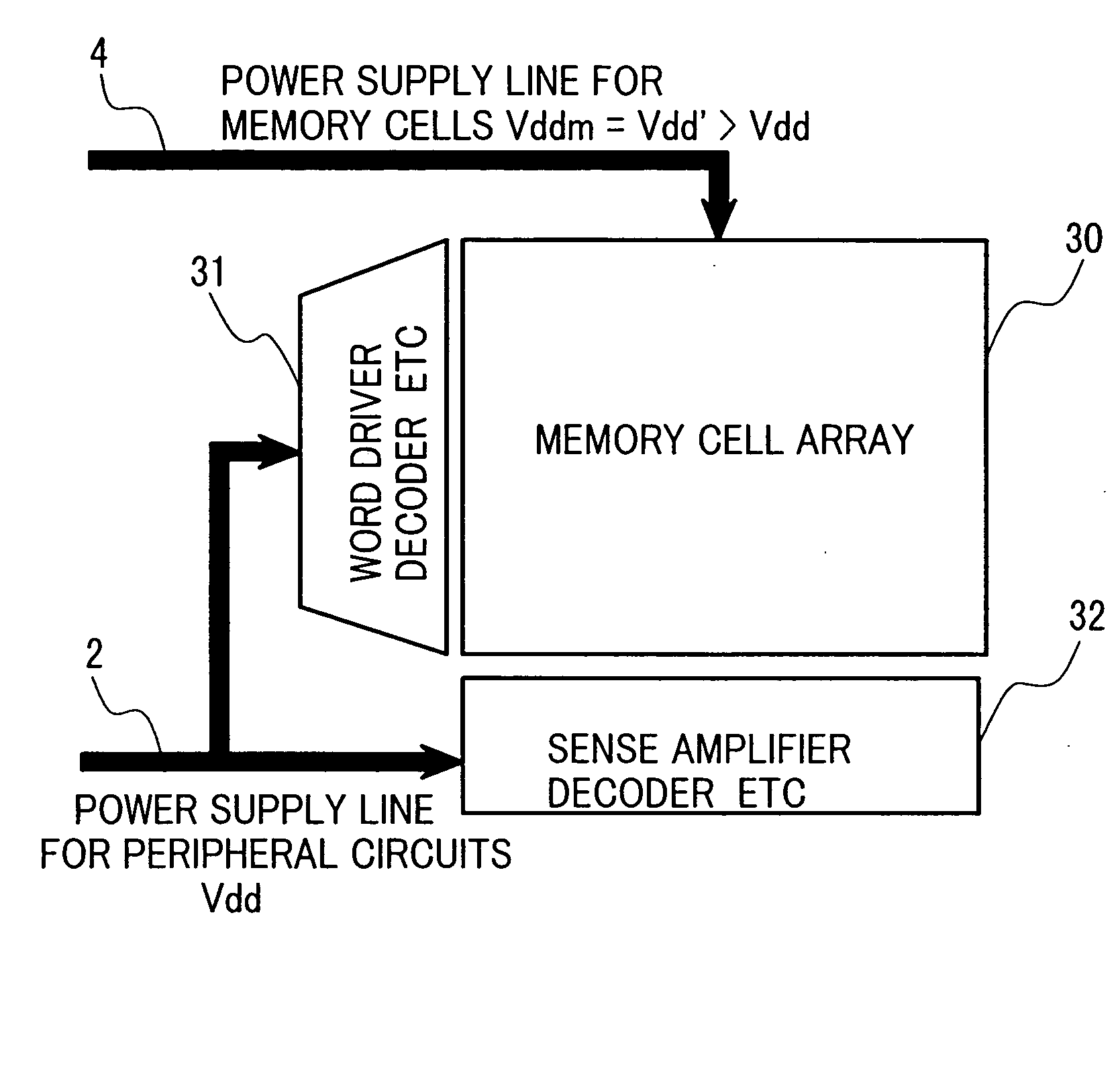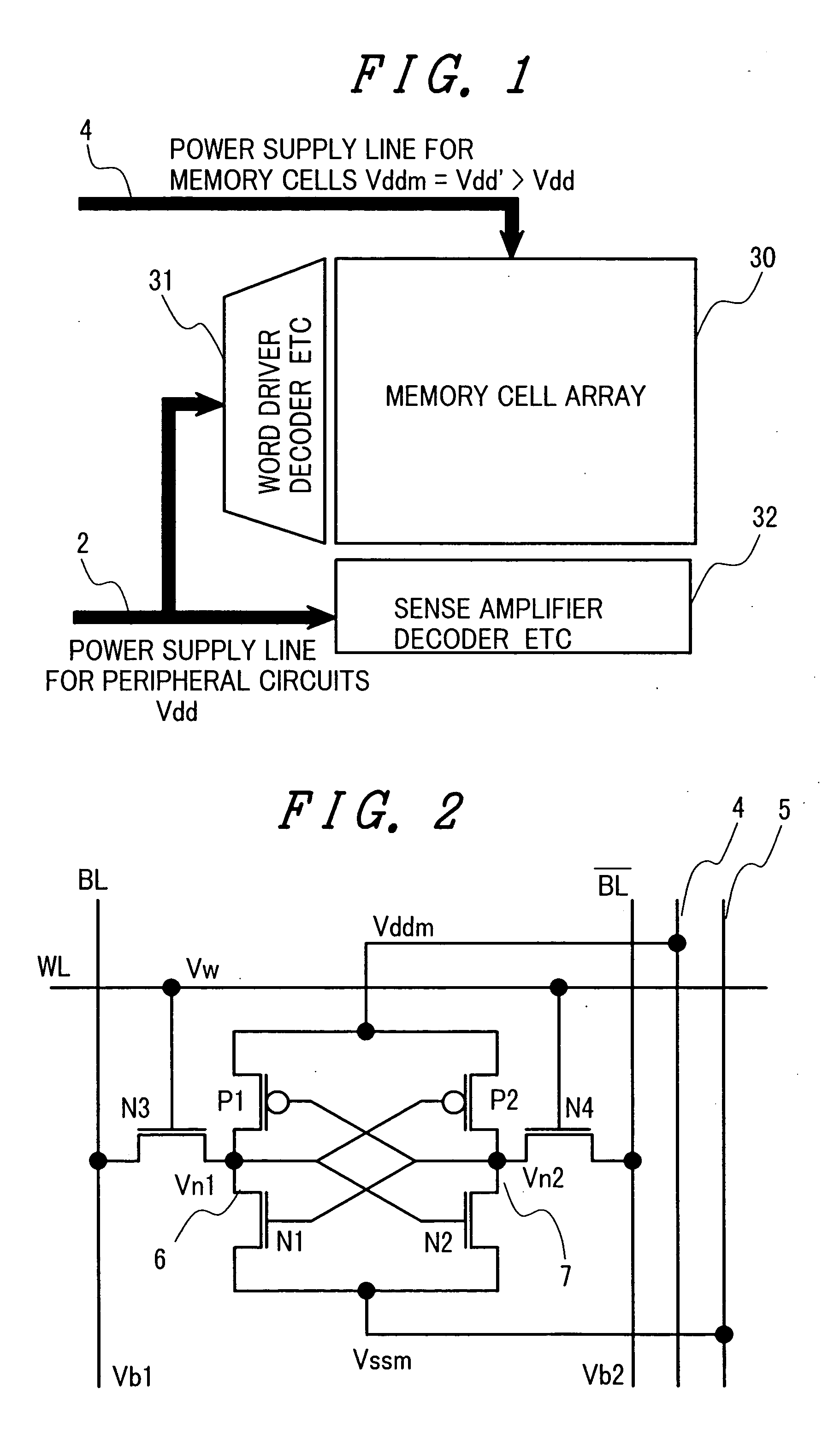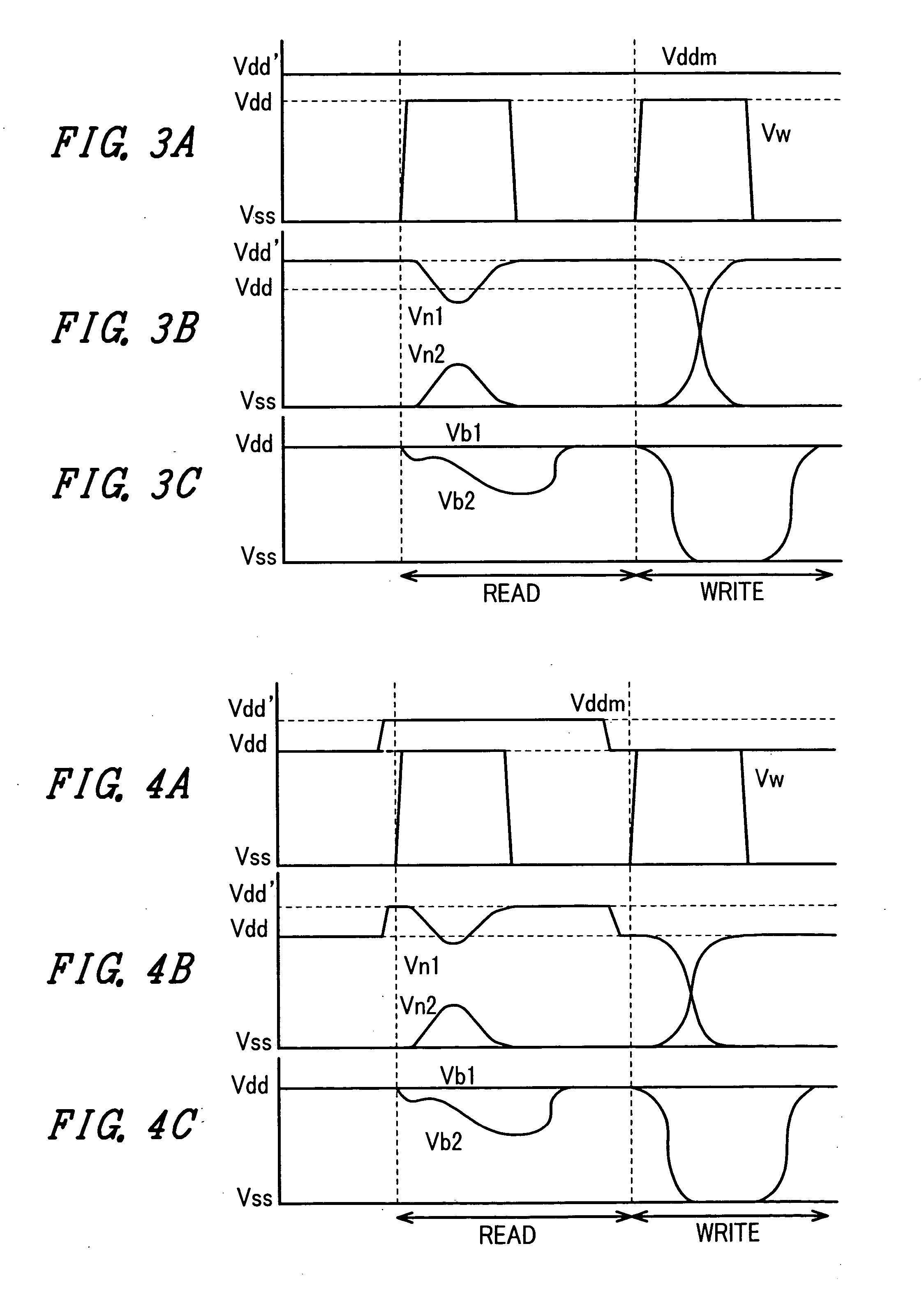Semiconductor memory device with memory cells operated by boosted voltage
a memory cell and semiconductor technology, applied in semiconductor devices, digital storage, instruments, etc., can solve the problems of high power consumption of power supply lines, inability to read, and long time for the power supply voltage vddm of memory cell arrays, etc., to achieve low power consumption, low voltage operation, and low noise margin
- Summary
- Abstract
- Description
- Claims
- Application Information
AI Technical Summary
Benefits of technology
Problems solved by technology
Method used
Image
Examples
embodiment 1
[0052] (Embodiment 1)
[0053]FIG. 1 is a block diagram showing a memory cell array 30 constituting a SRAM memory in accordance with the present invention, a peripheral circuit 31 of the memory including a word driver, a decoder, and the like, a peripheral circuit 32 of the memory including a sense amplifier, a decoder, and the like, and the relationship between respective voltages Vdd and Vddm of power supply lines 2 and 4 to be supplied to the memory cell array 30 and the peripheral circuits 31 and 32. A voltage Vdd′ higher than the voltage Vdd of the power supply line 2 for the peripheral circuits 31 and 32 other than the memory cell array is applied to the power supply line 4 for the memory cell array 30. Incidentally, the same ground voltage Vss is applied to the source line of memory cell driver MOS transistors in the memory cell array 30, and the ground lines for other peripheral circuits, which are not shown.
[0054] The configuration of the memory cell of the SRAM memory in thi...
embodiment 2
[0069] (Embodiment 2)
[0070]FIG. 5 shows another embodiment of the power supply configuration for the memory cell array constituting the SRAM memory in accordance with the present invention, and the peripheral circuits of the memory including a sense amplifier, a decoder, and the like. This configuration is different from the configuration of FIG. 1 described above in that the same voltage Vdd as that of the power supply line 2 for the peripheral circuits is applied as the voltage Vddm of the power supply line 4 for the memory array, and in that a voltage lower than a ground voltage Vss of a ground line 2s for the peripheral circuits other than the memory cell array is applied as a source line voltage Vssm of a memory cell driver MOS source line 5.
[0071] By keeping the source line voltage Vssm of the memory cell driver MOS transistors lower than the word line voltage Vw and the bit line voltages Vb1 and Vb2, the gate-source voltage of the driver MOS transistors N1 and N2 of the SRAM...
embodiment 3
[0072] (Embodiment 3)
[0073]FIG. 7 shows a still other embodiment of the power supply configuration for the memory cell array constituting the SRAM memory in accordance with the present invention, and the peripheral circuits of the memory including a sense amplifier, a decoder, and the like. This configuration is similar to the configuration of FIG. 5, but different therefrom in that the voltage Vdd′ higher than the power supply voltage Vdd for the circuits other than the memory cell array is coupled to the memory cell array 30 as the power supply voltage Vddm for the memory array.
[0074] Also with such a configuration, by keeping the memory array power supply voltage Vddm higher than the word line voltage Vw and the bit line voltages Vb1 and Vb2, and keeping the source line voltage Vssm of the memory cell driver MOS transistors lower than the word line voltage Vw and the bit line voltages Vb1 and Vb2, the gate-source voltage of the driver MOS transistors N1 and N2 of the SRAM cell b...
PUM
 Login to View More
Login to View More Abstract
Description
Claims
Application Information
 Login to View More
Login to View More - R&D
- Intellectual Property
- Life Sciences
- Materials
- Tech Scout
- Unparalleled Data Quality
- Higher Quality Content
- 60% Fewer Hallucinations
Browse by: Latest US Patents, China's latest patents, Technical Efficacy Thesaurus, Application Domain, Technology Topic, Popular Technical Reports.
© 2025 PatSnap. All rights reserved.Legal|Privacy policy|Modern Slavery Act Transparency Statement|Sitemap|About US| Contact US: help@patsnap.com



